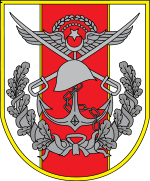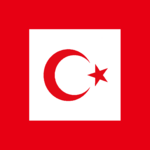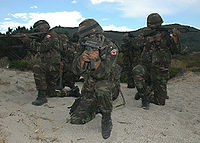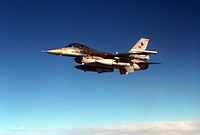- Turkish Armed Forces
-
Turkish Armed Forces
Türk Silahlı Kuvvetleri
Turkish Armed Forces sealFounded May 3, 1920[1] Service branches Turkish Army
Turkish Air Force
Turkish Navy
Gendarmerie*
Coast Guard*
*Note: Gendarmerie and Coast Guard fall under the Ministry of the Interior during peacetime.Leadership Supreme Military Command Abdullah Gül Minister of National Defense İsmet Yılmaz Chief of the General Staff Necdet Özel Manpower Military age 19 Conscription 6-15 months depending on education level Available for
military service21,079,077 (2010 est.) males, age 16-49 [3],
20,558,696 (2010 est.) females, age 16-49 [3]Fit for
military service17,664,510 (2010 est.) males, age 16-49 [3],
17,340,816 (2010 est.) females, age 16-49 [3]Reaching military
age annually700,079 (2010 est.) males,
670,328 (2010 est.) femalesActive personnel 612,900 - Total (2008 est.)[2]
Army: 402,000
Navy: 48,600
Air Force: 60,100
Gendarmerie: 100,000
Coast Guard: 2,200 (ranked 7th)Reserve personnel Gendarmerie: 50,000 (2008 est.)[2]
Other Branches Combined: 379,000 (2008 est.)[2]Deployed personnel 2,699 (2007 est.)
Note: This does not include the 36,000 stationed in the Turkish Republic of Northern Cyprus[2]Expenditures Budget $46.6 billion (est.2011)Ranked 8th[4] Percent of GDP 5.3%(est.2011)[4] Industry Domestic suppliers Mechanical and Chemical Industry Corporation
ASELSAN
GIRSAN
TISAS
Havelsan
Transvaro
Turkish Aerospace Industries
Otokar
Roketsan
Pardus
Gölcük Naval Shipyard
Akdal ArmsForeign suppliers  United States
United States
 Germany
Germany
 United Kingdom
United Kingdom
 Italy
Italy
 South Korea
South Korea
 France
France
 Spain
Spain
 China
China
 Russia
Russia
 Israel
Israel
 Australia
Australia
 Netherlands
Netherlands
 Norway
Norway
 Sweden
SwedenAnnual imports $675 million (2009 est. in constant 1990 USD)[5] Annual exports $830 m (USD)[6] Related articles History Military history of Turkey

Standard of the President as Commander-in-Chief of the Turkish Armed ForcesThe Turkish Armed Forces (TAF) (Turkish: Türk Silahlı Kuvvetleri or TSK) are the military forces of the Republic of Turkey. They consist of the Army, the Navy (including naval aviation and naval infantry), and the Air Force. The Gendarmerie and the Coast Guard, both of which have law enforcement and military functions, operate as components of the internal security forces in peacetime, and are subordinate to the Ministry of Interior. In wartime, they are subordinate to the Army and Navy.
The Chief of the General Staff is vacant. The Chief of the General Staff is the Commander of the Armed Forces. In wartime, he acts as the Commander in Chief on behalf of the President, who represents the Supreme Military Command of the TAF on behalf of the Grand National Assembly of Turkey.[7] Commanding the Armed Forces and establishing the policies and programs related with the preparation for combat of personnel, intelligence, operations, organization, training and logistic services are the responsibilities of the General Staff. Furthermore, the General Staff coordinates the military relations of TAF with NATO member states and other friendly nations.
After becoming a member of NATO on 18 February 1952, Turkey initiated a comprehensive modernization program for its Armed Forces. Towards the end of the 1980s, a second restructuring process was initiated.
The TAF participate in European Union battlegroups under control of the European Council, as a part of the Italian-Romanian-Turkish Battlegroup, which will be on standby for duty during June–December 2010. It also contributes operational staff to the Eurocorps multinational army corps initiative of the EU and NATO.
Contents
History
War of Independence
After the end of World War I, many Ottoman military personnel escaped from Rumelia to Anatolia for participating in the national movement. During the War of Independence, on May 3, 1920, Birinci Ferik Mustafa Fevzi Pasha (Çakmak) was appointed the Minister of National Defence, Mirliva İsmet Pasha (İnönü) was appointed the Minister of the Chief of General Staff of the government of GNA.[1] But on 3 August 1921, the GNA resigned İsmet Pasha from the Minister of National Defence because of his failure at Eskişehir-Kütahya and on 5 August, just before the Battle of Sakarya, appointed the chairman of GNA Mustafa Kemal Pasha (Atatürk) to the commander-in-chief of the Army of the GNA. Turkey won the War of Independence in 1922.
World War II
Turkey remained neutral until the final stages of World War II. In the initial stage of World War II, Turkey signed a treaty of mutual assistance with Great Britain and France.[8] But after the fall of France, the Turkish government tried to maintain an equal distance between both the Axis and the Allies.[citation needed] After Germany conquered the Balkan states, and the Axis (Germany and Italy) became neighbours with Turkey in the Aegean Sea, Turkey signed a Treaty of Friendship and Non-Aggression with Germany on June 18, 1941.
After the German-Soviet War broke out, the Turkish government sent a military delegation under Lieutenant General Ali Fuat Erden to the German Eastern Front and Germany.[9] After the German retreat from the Caucasus, the Turkish government got closer with Western Allies and Winston Churchill secretly met with İsmet İnönü at the Yenice Train Station near Adana on 30 January 1943, with the intent of pulling Turkey into the war, on the side of the Allies. A few days before the start of Operation Zitadelle, the Turkish government sent a military delegation under General Cemil Cahit Toydemir to Belgorod and observed the exercises of the 503rd Heavy Panzer Battalion and its equipment.[10] But after the failure of Operation Zitadelle, the Turkish government participated in the Second Cairo Conference in 1943, where Franklin D. Roosevelt, Winston Churchill and İsmet İnönü reached an agreement on issues regarding Turkey's possible contribution to the Allies. On 23 February 1945, Turkey declared war against Germany and Japan, after Yalta Conference announced that only states which were in war with Germany and Japan by 1 March 1945 would join the United Nations.[11]
Korean War
Turkey participated in the Korean War as a member state of the United Nations. It sent the Turkish Brigade to South Korea and suffered 731 deaths in combat. On 18 February 1952, Turkey became a member of NATO.[12]
Cyprus
On 20 July 1974, the TAF launched an invasion of Cyprus on the pretext of a coup which had been staged by the Cypriot National Guard against president Makarios III with the intention of annexing the island to Greece, but the invasion ended up with Turkey occupying a considerable area on the north part of it and establishing a government on it that only Turkey recognizes. The invasion came after more than a decade of sporadic intercommunal violence between the island's Greek Cypriots and Turkish Cypriots resulting from the constitutional breakdown of 1963. Turkey invoked its role as a guarantor under the 1960 Treaty of Guarantee in justification for it.[13] Turkish forces invaded the island in two waves, occupying 37% of the island's territory in the north-east and evicting 200,000 Greeks from their territories, in an act described by many sources as ethnic cleansing.[14][15][16]
In the aftermath, Turkish Cypriots declared a separate political entity in the form of the Turkish Federative State of Cyprus in 1975 and by 1983 made a unilateral declaration of independence as the Turkish Republic of Northern Cyprus, which was recognised only by Turkey. The United Nations continues to recognize the sovereignty of the Republic of Cyprus according to the terms of its independence in 1960. The conflict continues to overshadow Turkish relations with Greece and with the European Union.
PKK Campaign
Main article: Turkey – Kurdistan Workers' Party conflictThe TAF are in a protracted campaign against the PKK, which has involved frequent forays into neighbouring Iraq.
During the 1980s and 1990s many Kurdish rural communities were uprooted in an effort to limit the PKK's base of logistical support.[17] These actions by the TAF had resulted by the mid-1990s in more than 3,000 Kurdish villages being deserted while according to official figures 378,335 Kurdish people had been displaced and rendered homeless.[17]
In 2011 the TAF was described as "a broken and rudderless institution" by Eric Edelman, a former American ambassador to Turkey and number two at the Pentagon under George Bush junior. [18]
War in Afghanistan 2001-
After the 2003 Istanbul Bombings were linked to Al-Qaeda, Turkey deployed troops to Afghanistan to fight taliban forces and Al-Qaeda operatives, with the hopes of dismantling both groups. Turkey's responsibilities include providing security in Kabul (it currently leads Regional Command Capital), as well as in Wardak Province, where it leads PRT Maidan Shahr. Turkey was once the third largest contingent within the International Security Assistance Force. Turkey's troops are not engaged in combat operations and Ankara has long resisted pressure from Washington to offer more combat troops. According to the Washington Post, in December 2009, after US President Barack Obama announced he would deploy 30,000 more U.S. soldiers, and that Washington wants others to follow suit, Turkish Prime Minister Tayyip Erdogan, reacted with the message that Turkey would not contribute additional troops to Afghanistan. "Turkey has already done what it can do by boosting its contingent of soldiers there to 1,750 from around 700 without being asked", said Erdogan, who stressed that Turkey would continue its training of Afghan security forces.[85]
Modernization
Towards the end of the 1980s, a restructuring and modernization process valued at US$ 300 billion was initiated by the TAF, and continues today.[citation needed] The final goal of Turkey is to produce new generation indigenous military equipment and to become increasingly self-sufficient in terms of military technologies.
Humanitarian relief
The TAF have performed "Disaster Relief Operations," as in the 1999 İzmit earthquake in the Marmara region of Turkey. Apart from contributing to NATO, the Turkish Navy also contributes to the Black Sea Naval Co-operation Task Group, which was created in early 2001 by Turkey, Bulgaria, Georgia, Romania, Russia and Ukraine for search and rescue and other humanitarian operations in the Black Sea.
Branches
The TAF consists of three main branches.[19] It has an active manpower of around 612,900.[citation needed] (combined troop strength of around 1,041,900 personnel including reserves and paramilitary forces[2]). Currently, up to 36,700 troops[citation needed] may be stationed in Northern Cyprus.
Army
The Turkish Army has its foundations in remnants of the Ottoman forces inherited after the fall of the Ottoman Empire at the end of World War I. When Mustafa Kemal Atatürk and his colleagues formed the GNA in Ankara on April 23, 1920, Kâzım Karabekir's XV Corps was the only corps which had any combat value.[20] On November 8, 1920, the GNA decided to establish a standing army (Düzenli ordu) instead of irregular troops (Kuva-yi Milliye, Kuva-yi Seyyare etc.).[21] The army of the government of the GNA won the Turkish War of Independence in 1922. In 2008, the Turkish Army had around 402,000 active personnel[2] and is the second largest army of NATO (after the United States).[22][23]
As of 2006, the Turkish Army had 1,300 troops in northern Iraq, according to documents released as part of the United States diplomatic cables leak.[24]
Gendarmerie
The Turkish Gendarmerie is responsible for maintaining law and order in rural areas which do not fall under the jurisdiction of regular police forces. The Gendarmerie has around 250,000 active personnel. It is responsible to Ministry of the Interior during the peace time.
The Special Operations (Jandarma Özel Harekat) of the Gendermarie are trained for riot control, urban warfare and counter-terrorism warfare.
The Village guard system was used in Southeast Anatolia during the Turkey-PKK conflict. There are still 90,000 Village Guards equipped with AK-47/74 and RPK/PKM/RPD LMG's,[citation needed] but the government is planning to phase out the system.[citation needed]
The Turkish Navy has around 48,600 active personnel[2] and the total fleet displacement appears to be approximately 259,000 tons.[25] The Turkish Navy has an Amphibious Marine Brigade (Amfibi Deniz Piyade Tugayı), several commando detachments and two special operations forces: SAS and SAT.[26]
Coast Guard
The Turkish Coast Guard is responsible for maintaining law and order in the Turkish territorial waters. It has around 2,200 active personnel. It is responsible to Ministry of the Interior during the peace time.
Air Force
The Turkish Air Force operates one of the largest combat aircraft fleets of NATO. It has around 60,100 active personnel. Supported by the Turkish Air Force's Aerial refueling aircraft, its fighter aircraft can participate in international operations and exercises on every major continent and return back to their home bases.[citation needed] Sabiha Gökçen was the first female fighter pilot in military history.[27]
The Muhabere Arama Kurtarma (MAK) special forces, responsible to the Turkish Air Force, specialize in SAR operations.
Budget
The 2010 budget was 26 billion liras.[28] The Law on the Court of Accounts provides for external ex-post audits of armed forces' expenditure. It also paves the way for audits of extra budgetary resources earmarked for the defence sector, including the Defence Industry Support Fund.[29]
Role of the military in Turkish politics
After the Republic of Turkey was founded in 1923, Mustafa Kemal Atatürk prohibited the political activities of officers in active service with the Military Penal Code numbered 1632 and dated 22 May 1930 (Askeri Ceza Kanunu)[30]. However, after the coups d'état in 1960, the National Unity Committee (Millî Birlik Komitesi) established the Inner Service Act of the Turkish Armed Forces (Türk Silahlı Kuvvetleri İç Hizmet Kanunu) on 4 January 1961 to legitimize their military interventions in politics. In subsequent coup d'états and coup d'état attempts, they show reasons to justify their political activities especially with the article 35 and 85 of this act.[31]
The Turkish military perceived itself as the guardian of Kemalist ideology, the official state ideology, especially of the secular aspects of Kemalism. The TAF still maintains an important degree of influence over the decision making process regarding issues related to Turkish national security, albeit decreased in the past decades, via the National Security Council.
The military had a record of intervening in politics, removing elected governments four times in the past. Indeed, it assumed power for several periods in the latter half of the 20th century. It executed coups d'état in 1960 (27 May Coup), in 1971 (12 March Coup), and in 1980 (12 September Coup). Most recently, it maneuvered the removal of an Islamic-oriented prime minister, Necmettin Erbakan in 1997 (28 February Process).[3] The military executed the first democratically elected prime minister Adnan Menderes.[32]
On April 27, 2007, in advance of the November 4, 2007 presidential election, and in reaction to the politics of Abdullah Gül, who has a past record of involvement in Islamist political movements and banned Islamist parties such as the Welfare Party, the army issued a statement of its interests. It said that the army is a party to "arguments" regarding secularism; that Islamism ran counter to the secular nature of Turkey, and to the legacy of Mustafa Kemal Atatürk. The Army's statement ended with a clear warning that the TAF stood ready to intervene if the secular nature of the Turkish Constitution is compromised, stating that "the Turkish Armed Forces maintain their sound determination to carry out their duties stemming from laws to protect the unchangeable characteristics of the Republic of Turkey. Their loyalty to this determination is absolute."[33]
Contrary to outsider expectations, the Turkish populace was not uniformly averse to coups; many welcomed the ejection of governments they perceived as unconstitutional.[34] Members of the military must also comply with the traditions of secularism, according to the US Commission on International Religious Freedom report in 2008, members who performed prayers or had wives who wore the headscarf, have been charged with “lack of discipline”.[35]
Paradoxically, the military was an important force in Turkey’s Westernization but now represents an obstacle to Turkey’s desire to join the EU. Most surveys show trust in the military declining - from an average 90 % in 2002 to 60 % in 2011.[32]
Over a hundred people, including several generals, have been detained or questioned since July 2008 with respect to Ergenekon, an alleged clandestine, ultra-nationalist[36] organization with ties to members of the country's military and security forces.[37] The group is accused of terrorism in Turkey.[38] [39]
On 22 February 2010 more than 40 officers arrested and then were formally charged with attempting to overthrow the government with respect to so-called "Sledgehammer" plot. They include four admirals, a general and two colonels, some of them retired, including former commanders of the Turkish navy and air force (three days later, the former commanders of the navy and air force were released). Partially as a result, the Washington Post reported in April 2010 that the military's power had decreased.[40]
Medals and awards
- Turkish Armed Forces Medal of Honor
- Turkish Armed Forces Medal of Distinguished Service
- Turkish Armed Forces Medal of Distinguished Courage and Self-Sacrifice
- Turkish Armed Forces Medal of Bravery and Valour
- Turkish Armed Forces State Medal of Honor
See also
References
- ^ a b Harp Akademileri Komutanlığı, Harp Akademilerinin 120 Yılı, İstanbul, 1968, p. 26, 46.
- ^ a b c d e f g Library of Congress - Federal Research Division (August 2008), Country Profile: Turkey, pp. 25–26, http://memory.loc.gov/frd/cs/profiles/Turkey.pdf
- ^ a b "The World Factbook - Turkey". Central Intelligence Agency. https://www.cia.gov/library/publications/the-world-factbook/geos/tu.html.
- ^ a b John Pike. "World Wide Military Expenditures". Globalsecurity.org. http://www.globalsecurity.org/military/world/spending.htm. Retrieved 2011-10-23.
- ^ "TIV of arms imports to Turkey, 2008-2009". Stockholm International Peace Research Institute. http://armstrade.sipri.org/armstrade/page/values.php. Retrieved 6 June 2010.
- ^ "SSM Performance Report" (in Turkish) (pdf). Undersecretariat for Defense Industries. p. 82. http://www.ssm.gov.tr/anasayfa/hizli/duyurular/kurumsalDuyurular/Sayfalar/2009FaaliyetRaporu.aspx. Retrieved 20 June 2010.
- ^ Federal Research Division, Turkey: A Country Study, Kessinger Publishing, 2004, ISBN 9781419191268, p. 337.
- ^ See Murat Metin Hakki, SURVIVING THE PRESSURE OF THE SUPERPOWERS: AN ANALYSIS OF TURKISH NEUTRALITY DURING THE SECOND WORLD WAR, Chronicon 3 (1999 - 2007) 44 – 62, Center for Middle Eastern Studies, Harvard University, www.ucc.ie/chronicon/3/hakkfra.html, ISSN 1393-5259
- ^ Hüseyin Hüsnü Emir Erkilet, Şark cephesinde gördüklerim, Hilmi Kitabevi, 1943.
- ^ Johannes Glasneck, Inge Kircheisen, Türkei und Afghanistan, Dt. V. d. Wissenschaften, 1968, p. 139.
- ^ Mustafa Aydın, SAM, Turkish Foreign Policy; Framework and Analysis, Center for Strategic Research, 2004, p. 47.
- ^ For some of the NATO command structure discussions re entry of Turkey, see Sean Maloney, Securing Command of the Sea, Masters' thesis, University of New Brunswick, 1992
- ^ How Did the Situation Change after July 1974 ?, Turkish Ministry of Foreign Affairs
- ^ Welz, Gisela. Divided Cyprus: Modernity, History, and an Island in Conflict. Indiana University Press. p. 2. ISBN 0253218519.
- ^ Carpenter, Ted Galen (2000). NATO's Empty Victory: A Postmortem on the Balkan War. Washington, D.C: Cato Institute. p. 36. ISBN 1-882577-85-X.
- ^ Carpenter, Ted Galen (2002). Peace and Freedom: Foreign Policy for a Constitutional Republic. Washington, D.C: Cato Institute. p. 187. ISBN 1-930865-34-1.
- ^ a b "Still critical". www.hrw.org. http://www.hrw.org/en/node/11822/section/4. Retrieved 2009-01-11. "The Security forces have been accused by some circles as having forcibly displaced Kurdish rural communities during the 1980s and 1990s in order to combat the Kurdish Workers’ Party (PKK) insurgency, which drew its membership and logistical support from the local impoverished population. Accusations of indiscriminatory use of force followed, asserting that the Turkish security forces had failed to distinguish between the armed terrorists and the local civilian financial support...The operations were marked by scores of “disappearances” and extrajudicial executions. By the mid-1990s, more than 3,000 villages had been virtually wiped from the map, and, according to official figures, 378,335 Kurdish villagers had been displaced and left homeless"
- ^ "Turkey’s army: At ease". The Economist. 2011-08-06. http://www.economist.com/node/21525457. Retrieved 2011-10-23.
- ^ TAF Organization Chart[dead link]
- ^ Sina Akşin, Essays in Ottoman-Turkish Political History, Isis Press, 2000, p. 44.
- ^ Suat İlhan, Atatürk ve Askerlik: Düşünce ve Uygulamaları, Atatürk Araştırma Merkezi, 1990, p. 88. (Turkish)
- ^ Öymen, Onur (1999-06-26). "Turkey and the Alliance". NATO. Archived from the original on 2008-06-09. http://web.archive.org/web/20080609183316/http://www.nato.int/turkey/turkey2.htm. Retrieved 2008-08-19.
- ^ "Who is Losing Turkey?". The Economist. 2006-09-26. http://www.economist.com/displayStory.cfm?Story_ID=E1_SJSTDQG. Retrieved 2008-06-30.
- ^ "paragraph 10". Wikileaks.ch. http://www.wikileaks.ch/cable/2006/01/06ANKARA331.html. Retrieved 2011-10-23.
- ^ Unofficial Homepage of the Turkish Navy, and World Navies Today: Turkey, Revised 25 March 2002, Version 1.20, and World Navies Today: Europe
- ^ Ray Bonds, David Miller, Illustrated Directory of Special Forces, Zenith Imprint, 2003, p. 99.
- ^ Sabiha Gökçen's biography, USAF Air Command and Staff College
- ^ "SIPRI Publications". Milexdata.sipri.org. http://milexdata.sipri.org/result.php4. Retrieved 2011-10-23.
- ^ http://ec.europa.eu/enlargement/pdf/key_documents/2011/package/tr_rapport_2011_en.pdf
- ^ Askeri Ceza Kanunu, Ministry of Justice of the Republic of Turkey, 22 May 1930.
- ^ Fikret Bila, "Çare ihtilal değil, komutanın konuşması", Milliyet, 4 Oct. 2007.
- ^ a b "Top Generals Quit in Group, Stunning Turks". New York Times. http://www.nytimes.com/2011/07/30/world/europe/30turkey.html., July 29, 2011, New York Times.
- ^ "Excerpts of Turkish army statement". BBC News. 2007-04-28. http://news.bbc.co.uk/2/hi/europe/6602775.stm. Retrieved 2008-06-30.
- ^ Lt. Col. Patrick F. Gillis (2004-05-03). "U.S.-Turkish Relations: The Road to Improving a Troubled Strategic Partnership". U.S. Army War College. p. 4. http://www.stormingmedia.us/31/3134/A313424.pdf. "In all of these 'coups' the majority of the Turkish public accepted the military’s actions because they felt they were necessary for the well being of the state and because the military did not seek to impose permanent military governance"
- ^ Other countries under review: kazakhstan, malaysia, and turkey United States Commission on International Religious Freedom. 2008. Retrieved on 2009-05-02.
- ^ "State connections to murder of journalist Hrant Dink being ignored, warns BIANET, IPS Communication Foundation (BIANET), 2008". Ifex.org. http://www.ifex.org/en/content/view/full/90721/. Retrieved 2011-10-23.
- ^ Acar, Erkan (2008-09-06). "Ergenekon has links to security and judiciary bodies". Today's Zaman. http://todayszaman.com/tz-web/detaylar.do?load=detay&link=152326. Retrieved 2008-09-06.[dead link]
- ^ "Ergenekon- Guide to Ergekon, Accused of Terrorism in Turkey, by Amy Zalman". Terrorism.about.com. http://terrorism.about.com/od/groupsleader1/p/Ergekon.htm. Retrieved 2011-10-23.
- ^ "Prominent names detained in Turkey's Ergenekon probe". Hürriyet. 2009-01-09. http://hurarsiv.hurriyet.com.tr/goster/haber.aspx?id=10724747&tarih=2009-01-07. Retrieved 2009-01-09.
- ^ http://www.washingtonpost.com/wp-dyn/content/article/2010/04/10/AR2010041002860.html?hpid=topnews
Further reading
- Birler, Hayri (1997-02-07). "The Coup Primer". Turkish Daily News. http://arama.hurriyet.com.tr/arsivnewsmobile.aspx?id=-502727. Retrieved 2008-10-12.
North Atlantic Treaty Organization (NATO) History 
Structure Members Military of Asia Sovereign
statesAfghanistan · Armenia · Azerbaijan · Bahrain · Bangladesh · Bhutan · Brunei · Burma (Myanmar) · Cambodia · People's Republic of China · Cyprus · East Timor (Timor-Leste) · Egypt · Georgia · India · Indonesia · Iran · Iraq · Israel · Japan · Jordan · Kazakhstan · North Korea · South Korea · Kuwait · Kyrgyzstan · Laos · Lebanon · Malaysia · Maldives · Mongolia · Nepal · Oman · Pakistan · Philippines · Qatar · Russia · Saudi Arabia · Singapore · Sri Lanka · Syria · Tajikistan · Thailand · Turkey · Turkmenistan · United Arab Emirates · Uzbekistan · Vietnam · Yemen
States with limited
recognitionAbkhazia · Nagorno-Karabakh · Northern Cyprus · Palestine · Republic of China (Taiwan) · South Ossetia
Dependencies and
other territoriesChristmas Island · Cocos (Keeling) Islands · Hong Kong · Macau
Military of Europe Sovereign
states- Albania
- Andorra
- Armenia
- Austria
- Azerbaijan
- Belarus
- Belgium
- Bosnia and Herzegovina
- Bulgaria
- Croatia
- Cyprus
- Czech Republic
- Denmark
- Estonia
- Finland
- France
- Georgia
- Germany
- Greece
- Hungary
- Iceland
- Ireland
- Italy
- Kazakhstan
- Latvia
- Liechtenstein
- Lithuania
- Luxembourg
- Macedonia
- Malta
- Moldova
- Monaco
- Montenegro
- Netherlands
- Norway
- Poland
- Portugal
- Romania
- Russia
- San Marino
- Serbia
- Slovakia
- Slovenia
- Spain
- Sweden
- Switzerland
- Turkey
- Ukraine
- United Kingdom
- Vatican City
States with limited
recognition- Abkhazia
- Kosovo
- Nagorno-Karabakh
- Northern Cyprus
- South Ossetia
- Transnistria
Other entities - European Union
- Sovereign Military Order of Malta
Categories:- Conscript militaries
- Military of Turkey
Wikimedia Foundation. 2010.





